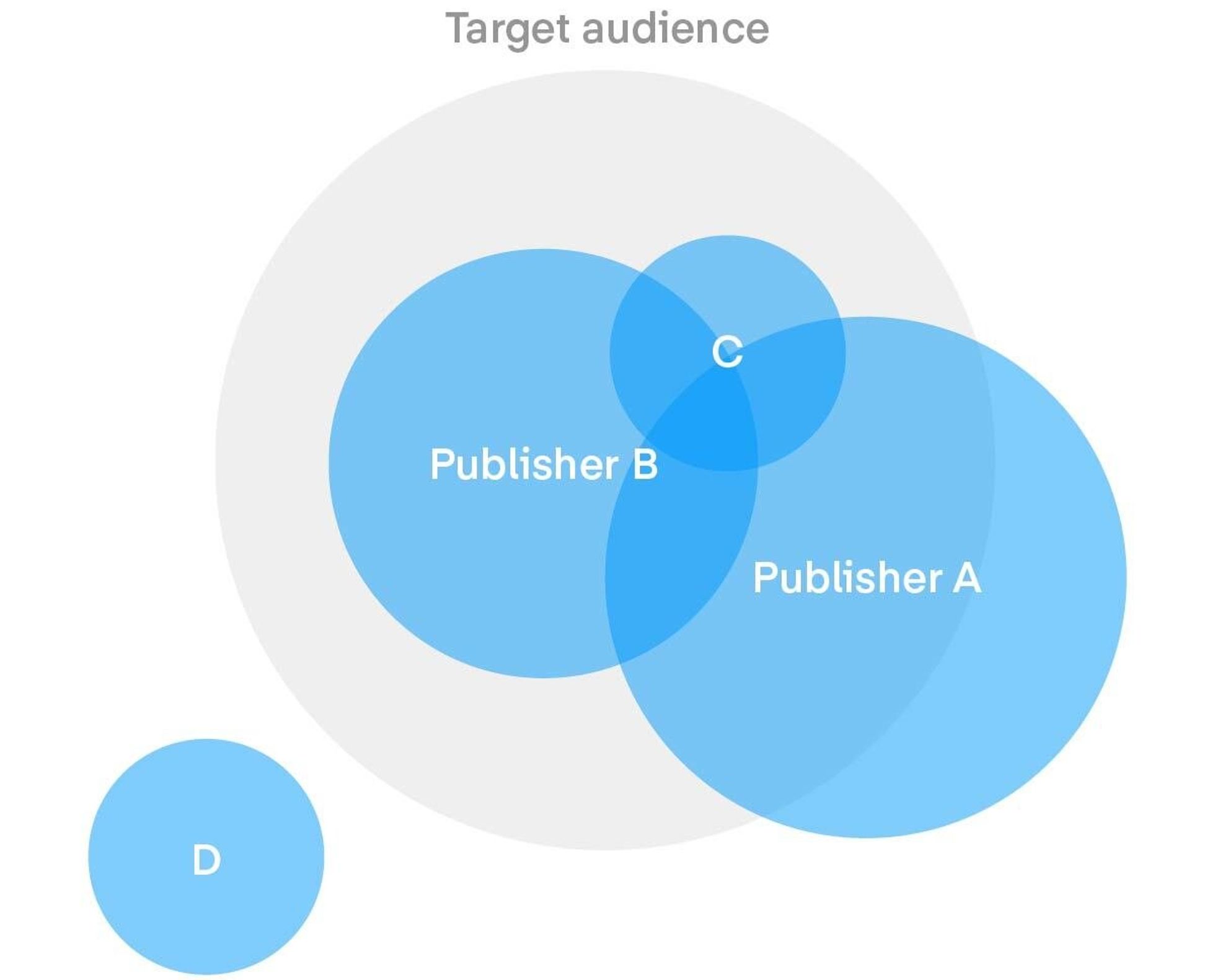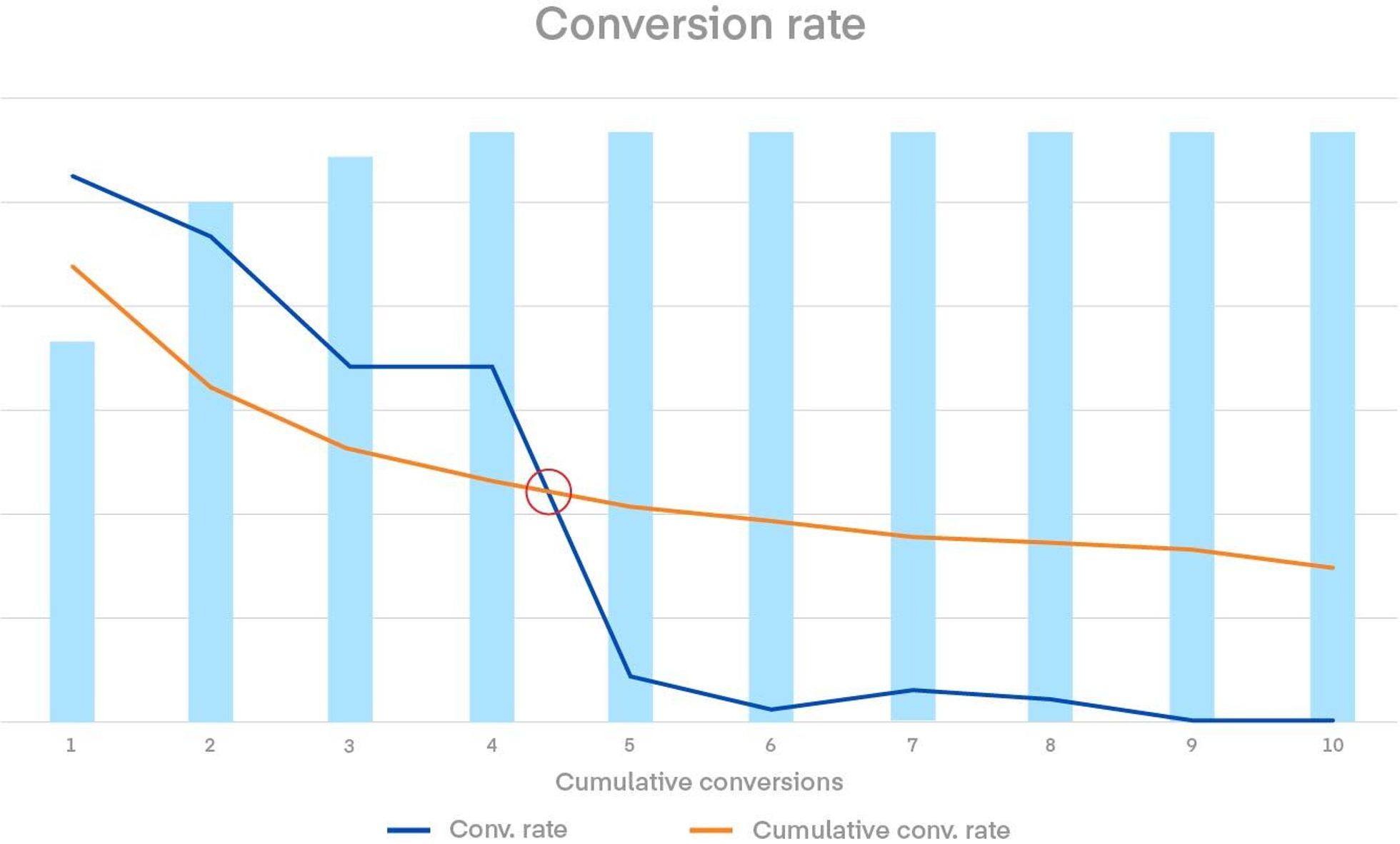Resources Our platform
Your end-of-year media-planning checklist

Recruiting fraud is a growing issue for many companies.
The Trade Desk takes this issue seriously and is taking steps to address it.
Share:
Frequency management can enable you to capture audience attention while avoiding overexposure. In part one, we uncovered the myths of effective media buying and their impact on frequency management. Now we’ll cover the strategic components to best evaluate frequency.
If you buy your media in a single demand-side platform, you can control frequency through an identity graph, preferably together with your first-party data. An identity graph can tie together impressions across devices, giving you a holistic view of all the touchpoints where a person could see your ad. Without this tool, you might inadvertently expose a user to the same ad 10 times on each device, quickly amounting to wasted spend — and an exasperated consumer.
What’s more, you can de-duplicate audiences in a single buying environment by analyzing the yield, or impression availability from prospective publishers, and reviewing the inventory IDs coming through biddable environments. This process lets you see where reach can be maximized and where your target consumer is. Below is an example output of this exercise, which reveals not only where publishers add the most value, but also where frequency can add significant value out the gate.

Once you consolidate sellers into a single buying environment, you can optimize the seller list to focus on aligning with the target audience and evaluate cost relative to supply-and-demand economies, relying heavily on machine learning to inform optimal price at scale. After initial consolidation and inventory refinement, you can control frequency across inventory sources, which can save you significant media spend that can be reinvested to help drive incremental reach and performance.

The above graph (Figure 2) shows the conversion rate dropping significantly after five exposures. If the budget that was used to reach people six-plus times had been reinvested into new audiences, it would have resulted in a 36 percent reduction in CPA.

In Figure 3, we see a distinct frequency cliff after five exposures. A frequency cap of six would have allowed 25% of the total budget to be reinvested — equivalent to reaching 4 million net-new households.
Optimal frequency can drive performance if campaigns are focused on the right goals and use the right targeting settings, particularly when you concurrently use artificial intelligence as a co-pilot. Given the unique nature of each advertiser and campaign, we can’t provide specific guidance on campaign settings. But a general rule of thumb is to select a goal that reflects business objectives, and to be sparing with targeting settings, as too much targeting can restrict bidding options and potentially hinder performance. Instead, we recommend you rely on bidding algorithms to optimize toward inventory that supports performance objectives and away from inventory that does not.
We also advise that you take a second look at general campaign restrictions, such as:
A holistic identity graph can help you understand the impacts of frequency across environments and devices, and manage your users’ journeys across touchpoints — from Connected TV, audio, native, display, digital out-of-home, and other sources.
In a recent analysis, we found that marketers who managed frequency across a single environment achieved six times more effective reach — meaning they were able to scale budgets to preferred audiences (and outcomes) by six times through frequency management alone.
Source: The Trade Desk research, based on 100 deals across the platform over the course of five days.
The Trade Desk does not guarantee the same results.
If you’re unsure whether you’re ready to evaluate frequency with your current settings, reach out to your account manager to review your campaign settings.
Continue to part three to get the seven steps to evaluate ideal frequency on The Trade Desk.
Need help finding your optimal frequency? Our trading team is focused on diving into data with you to maximize your investments across the open internet.
The Trade Desk provides this information for the general knowledge of its clients or prospective clients and does not make any representations nor guarantees of any kind with regards to the future performance.
Resources Our platform

Resources Our platform

Case Studies Connected TV
